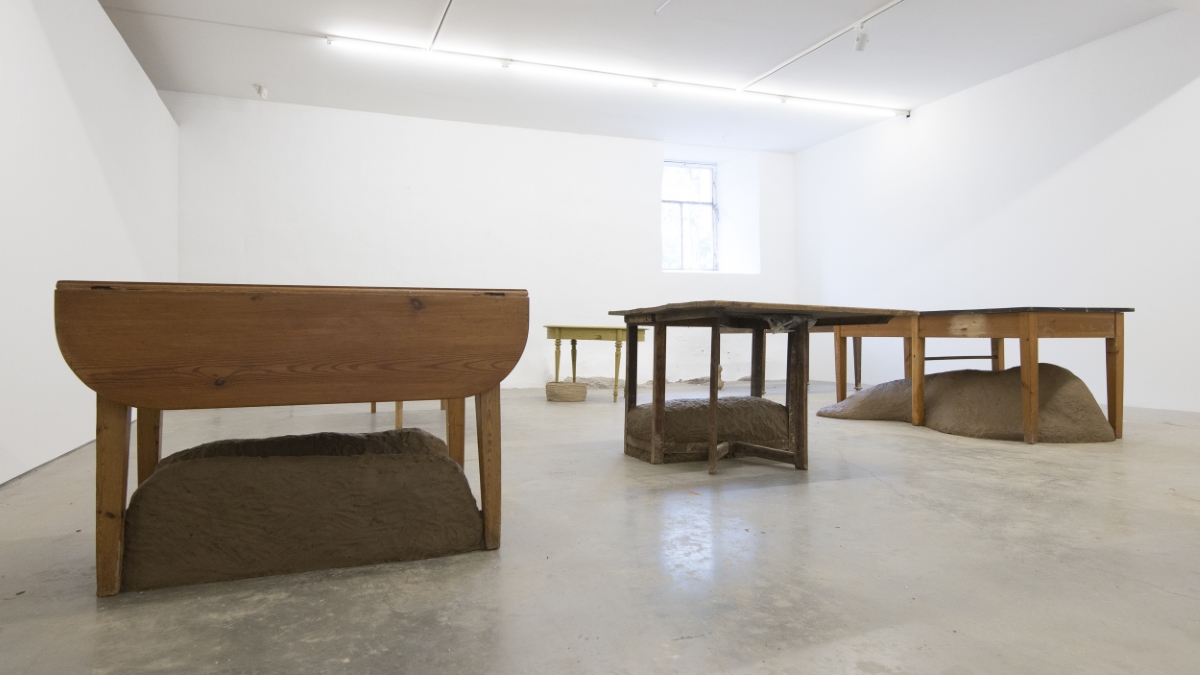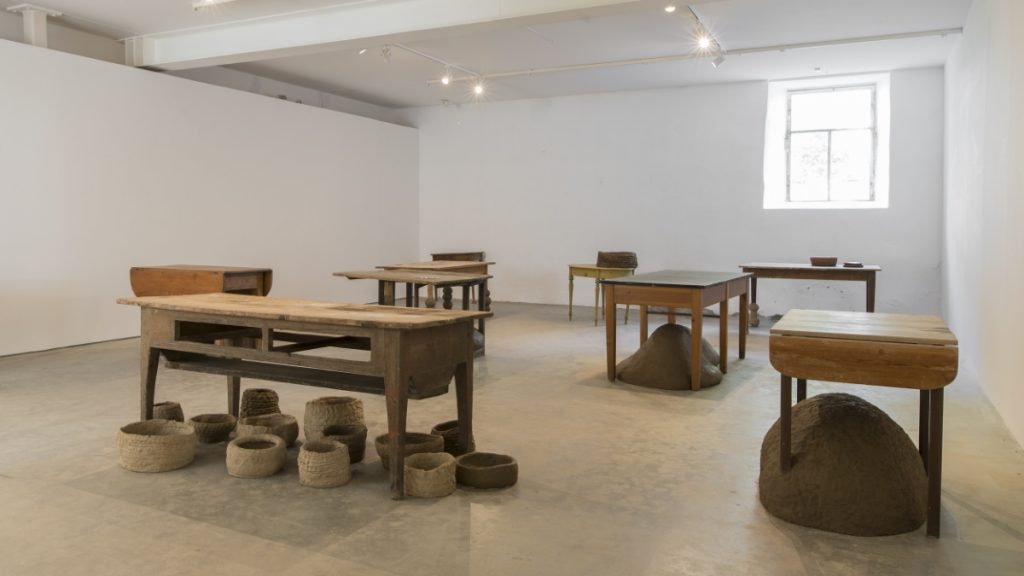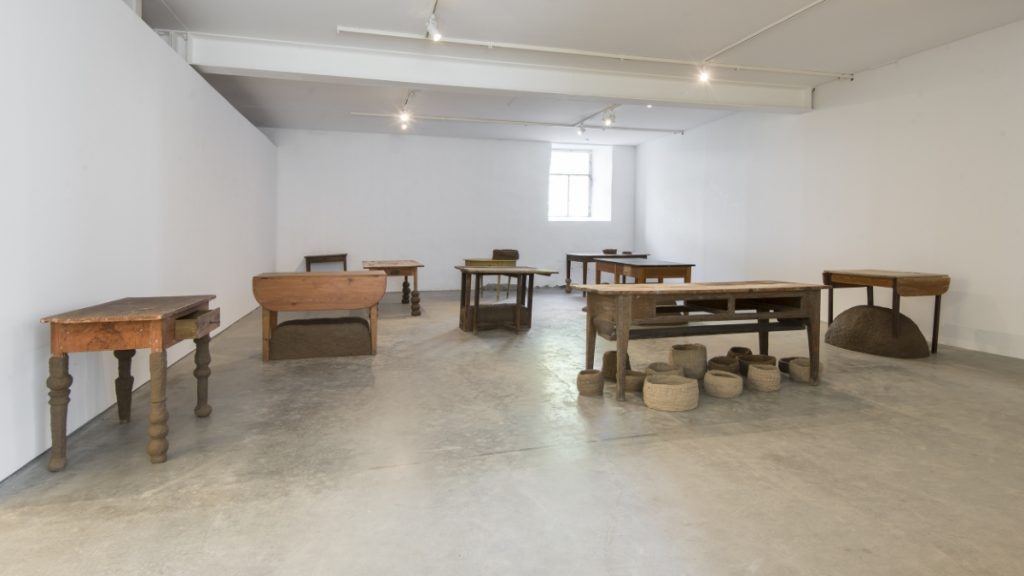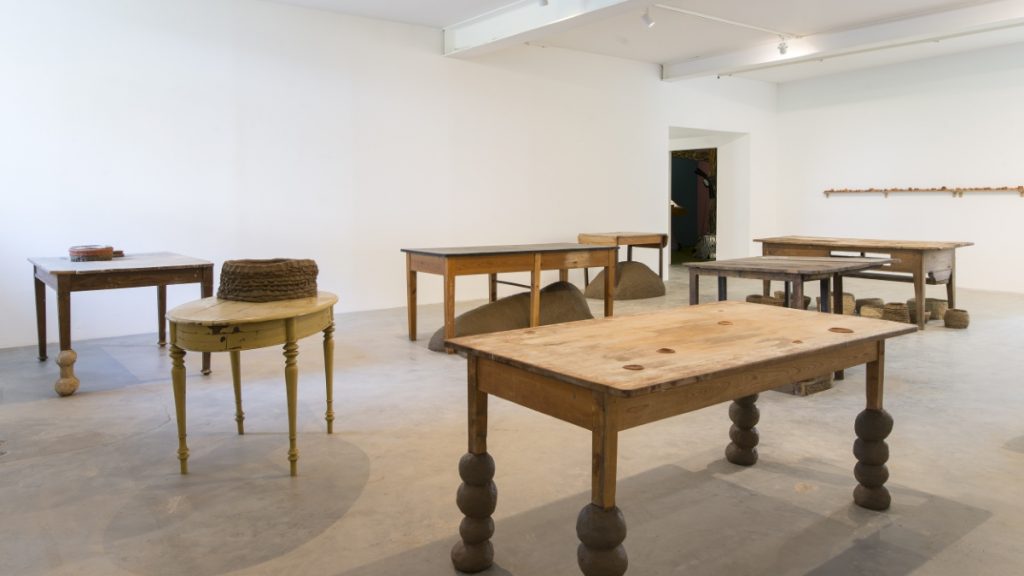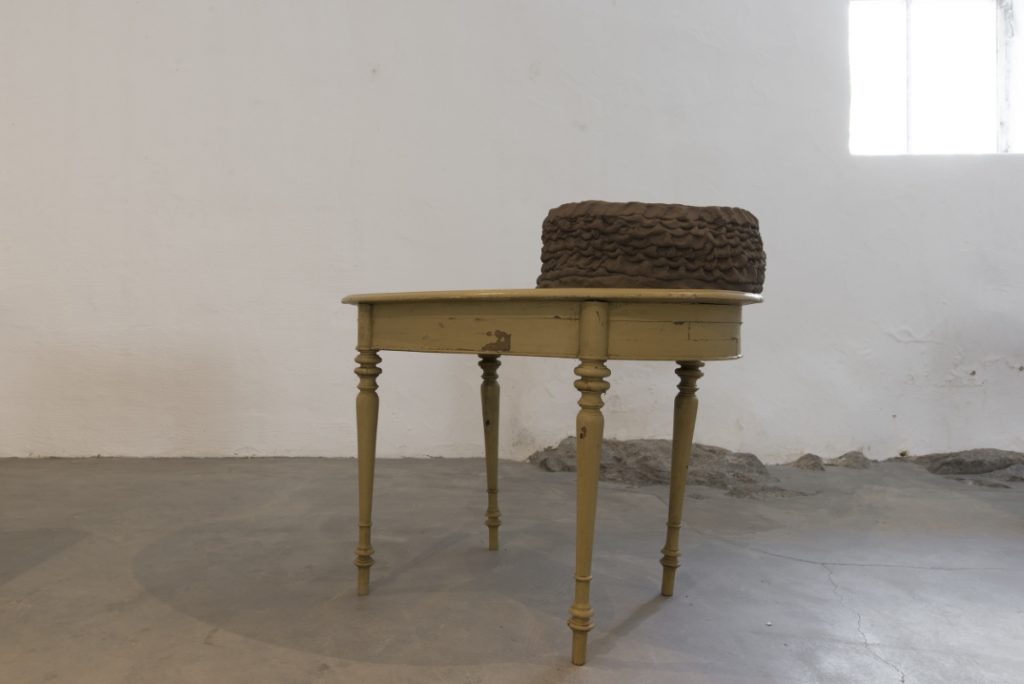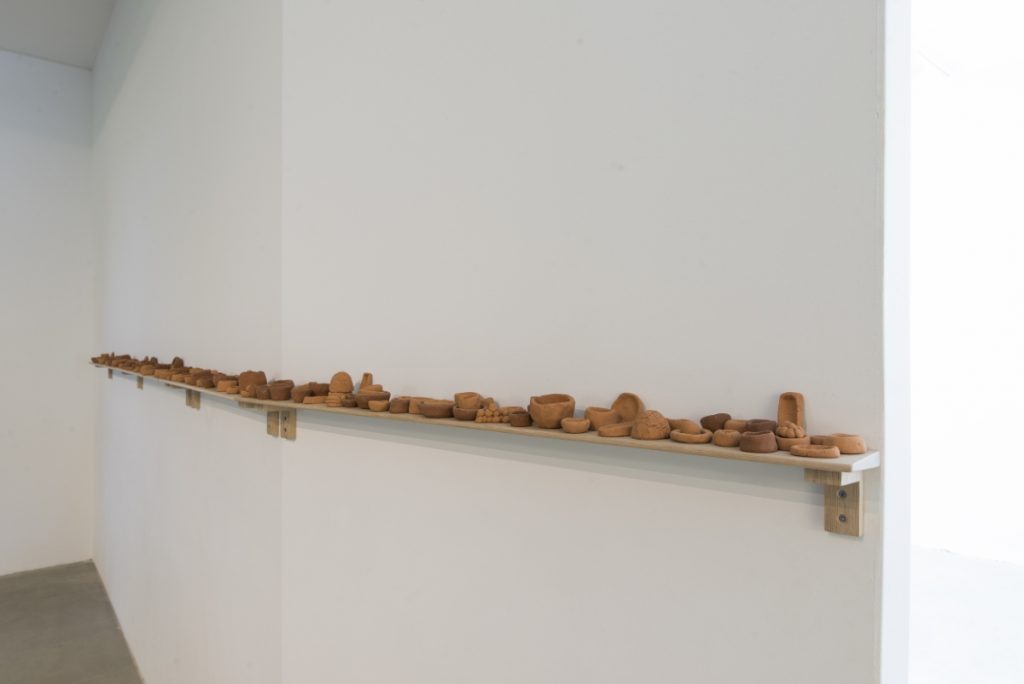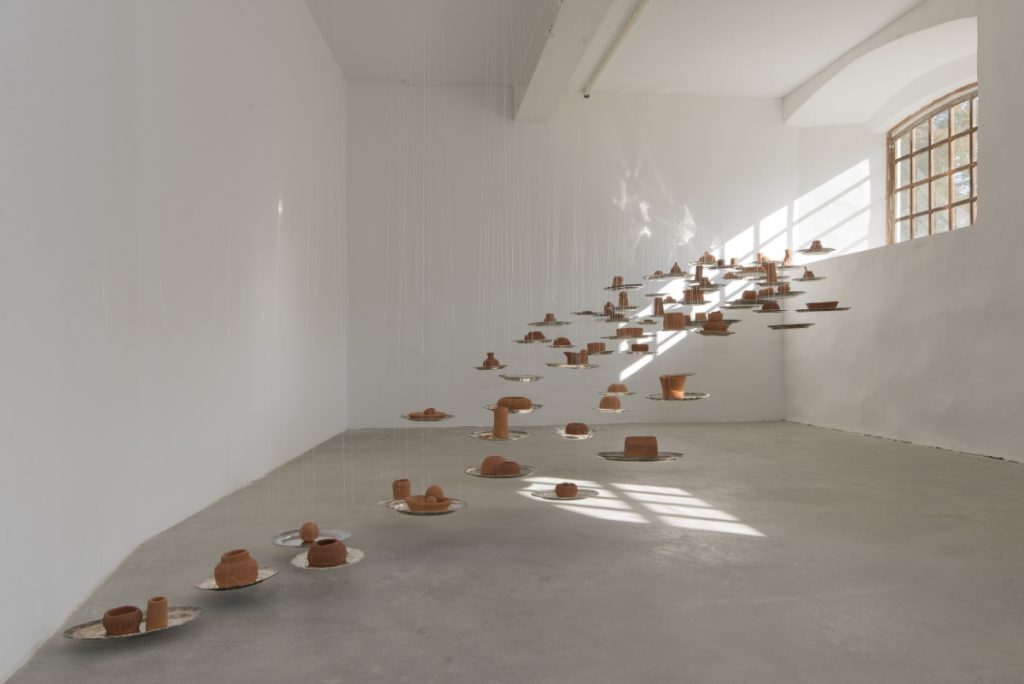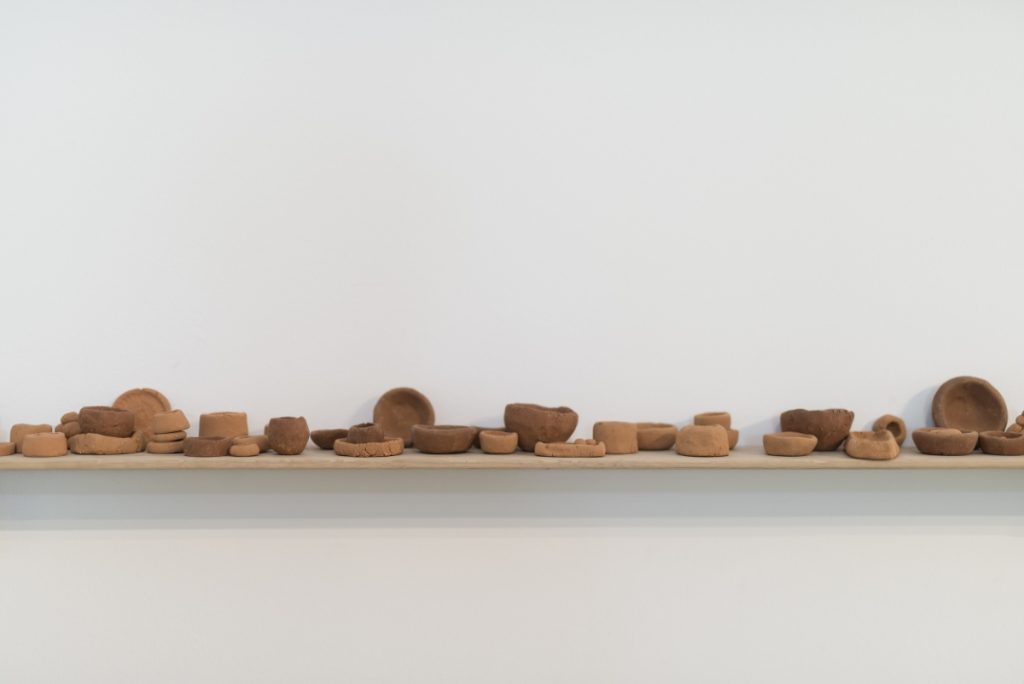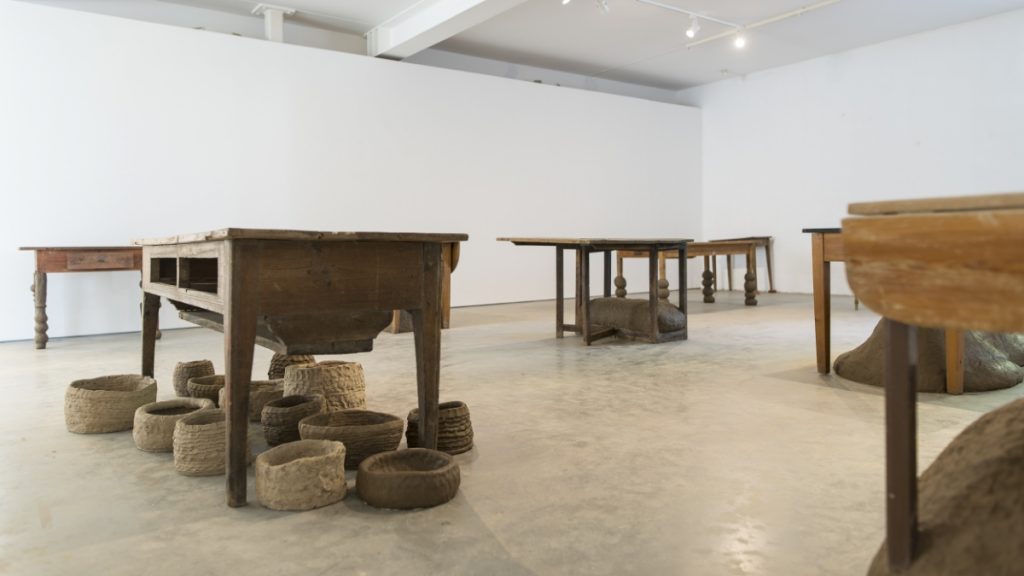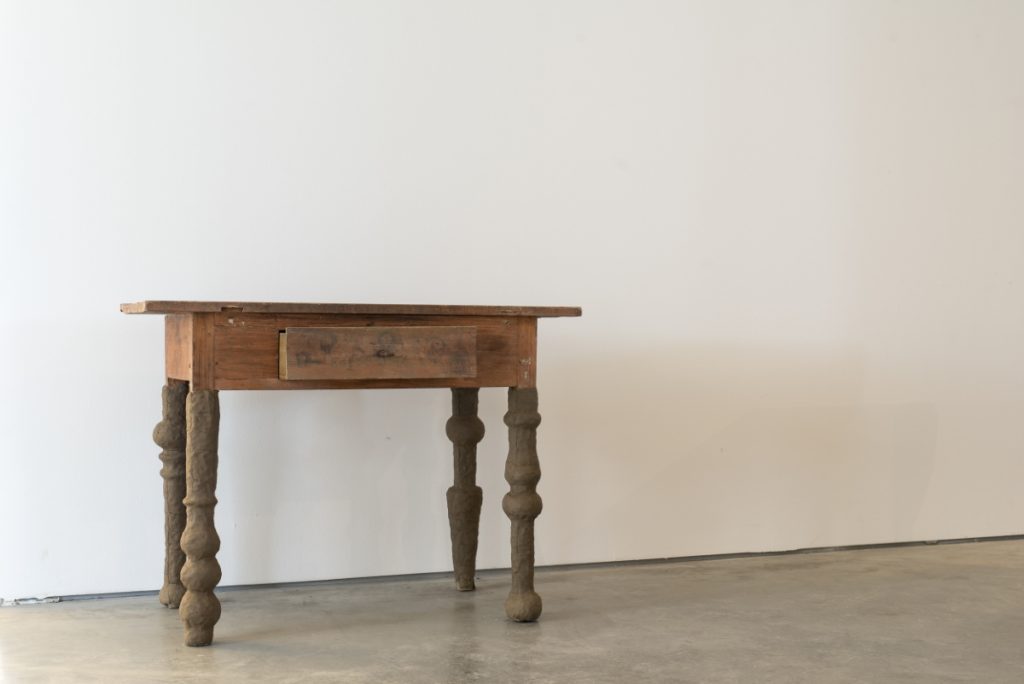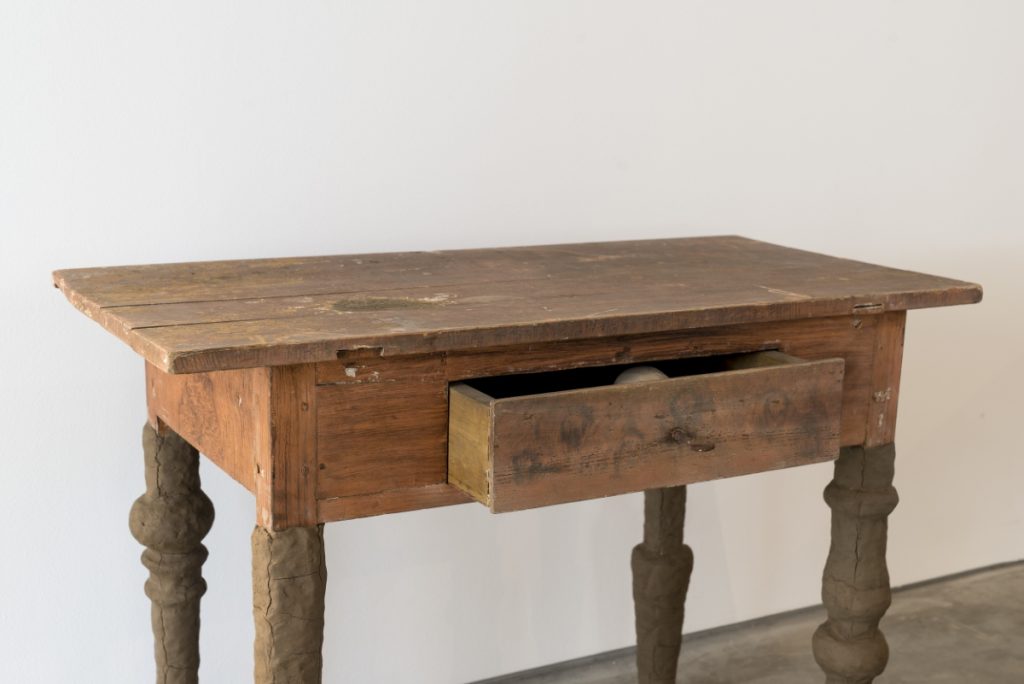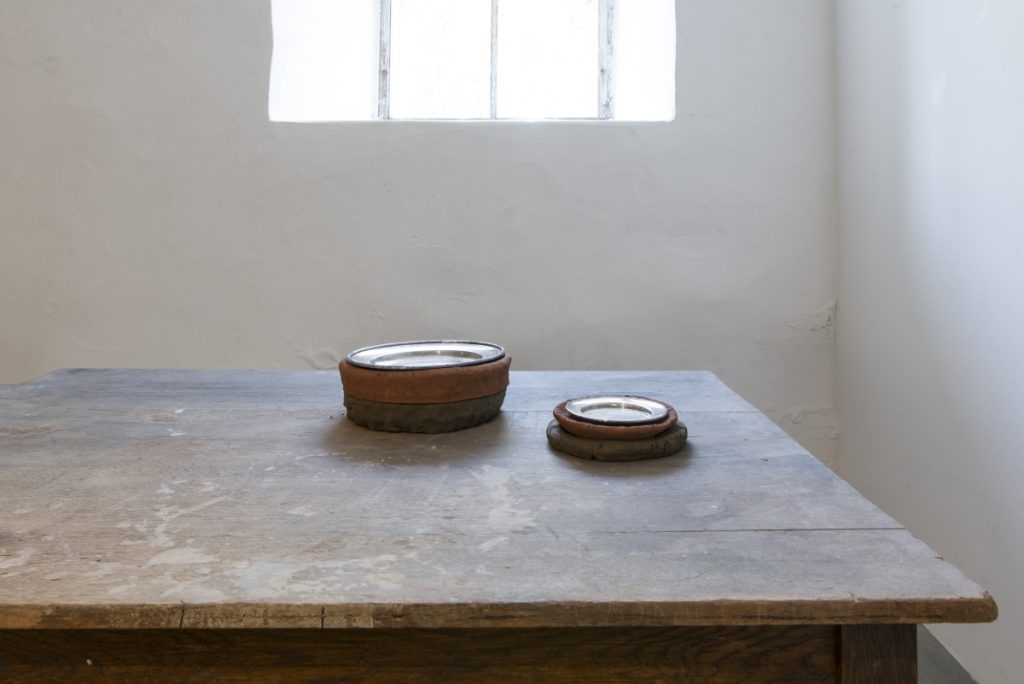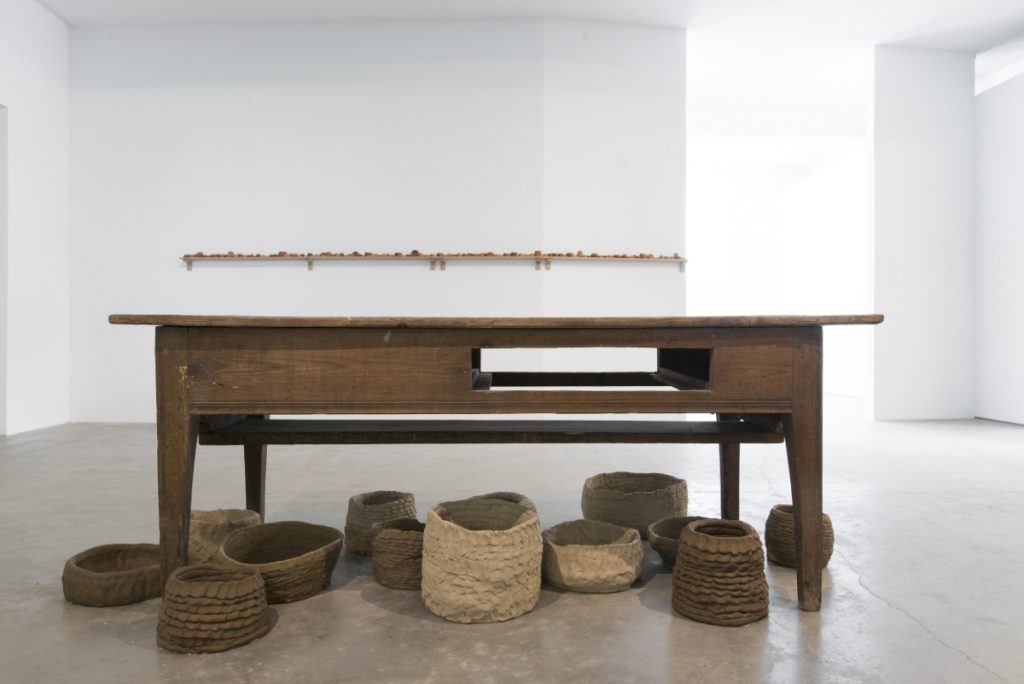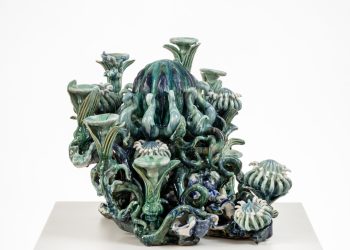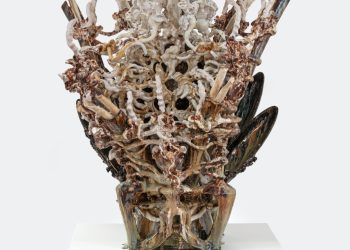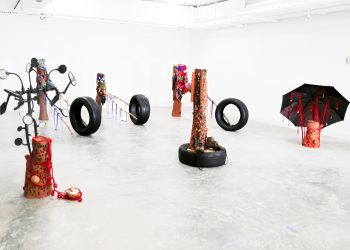Jennifer Forsberg: Landtax, 2017
”I am interested in daily routine, repetition, work. Many hours, many, people, many lives—that history speaks to me.”
Clay as a medium is essential in the eyes of Jennifer Forsberg. She has chosen specifically the clay connected to Wanås’ history to serve as the starting point for her exhibition. In working, she has slowly approached the place itself, letting clay become meaningful in the exhibition. In her practice as an artist and artisan, there is a connection between the physical work of transforming a material and the time that must be allowed for the process of thought. More than a year before the exhibition began, Jennifer began searching for the old brickworks that had stood on the grounds of Wanås Estate. She has dug in the earth and extracted clay from the site, the same clay that bricks and, most likely, everyday goods were once made of. The complexity of interpersonal relationships of those who worked or lived on the estate fascinate her and are the starting point for her creations—which often contain everyday goods like tables, buildings, ladders, lamps, and vessels. The earth connects us, rich and poor, and all of us are and will always be indebted to the land we use.
Land tax is originally an economic term, a transaction relating to leasing fees that also formed the basis for how land was valued. Jennifer Forsberg expands the meaning of the word—for her, it is a polarized concept, a metaphor for work, the fruits of labor, and its cost.
Filippa Forsberg – curator Wanås Exhibitions
Jordränta (Landtax) exhibition at Wanås Konst, September-December 2017. Installation with clay objects, wooden tables, metal; varying sizes
Photos by Gert Germeraad


